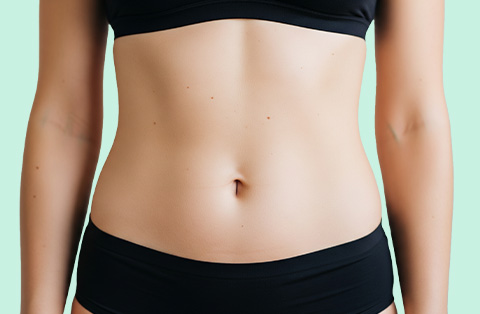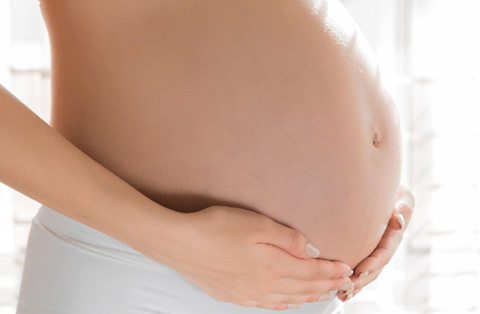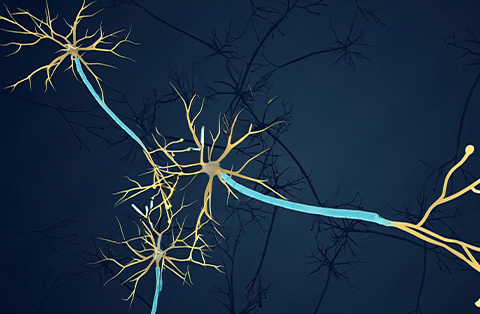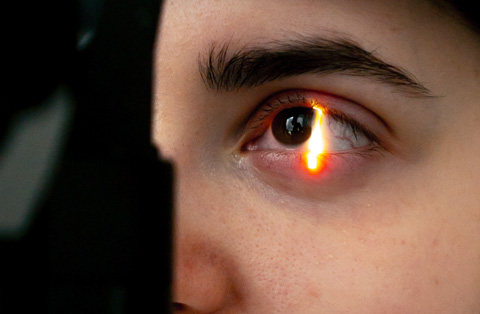Pregnancy can be one of the most transformative experiences in a woman’s life, both emotionally and physically. For many, the aftermath leaves them longing for their pre-pregnancy bodies, particularly the abdominal area.
Enter the realm of tummy tucks after pregnancy.
What is a Tummy Tuck?
A tummy tuck, scientifically termed as abdominoplasty, is a surgical procedure designed to remove excess fat and skin from the abdominal region, restoring weakened or separated muscles to create a smoother and firmer profile.
Tummy Tuck Types:
- Full Tummy Tuck: Targets both the upper and lower abdomen.
- Mini Tummy Tuck: Focuses primarily on the area below the navel.
- Extended Tummy Tuck: Addresses the abdomen as well as the flanks.
- Hourglass Tummy Tuck: Emphasizes a curvier, hourglass silhouette.
Pregnancy & Your Tummy
Pregnancy is a transformative phase in a woman’s life that brings with it numerous emotional and physical changes. The abdomen, in particular, undergoes significant modifications as it accommodates the growing fetus.
Understanding these changes can help in comprehending why many women consider cosmetic interventions post-pregnancy.
Skin Expansion:
One of the most obvious changes during pregnancy is the stretching of the abdominal skin. The skin is elastic, and its fibers allow for this growth.
However, the extent of stretching varies among women depending on factors such as genetics, skin quality, and the size of the baby or babies.
Abdominal Muscles:
The rectus abdominis muscles (often known as the “six-pack” muscles) can stretch and sometimes separate, a condition termed diastasis recti.
This separation can lead to a pouch or “mummy tummy” appearance post-pregnancy, which is resistant to diet and exercise.
Fat Redistribution:
Pregnancy may lead to an altered fat distribution pattern. Some women accumulate fat cells around their midsection, leading to increased abdominal girth even after giving birth.
Stretch Marks:
The rapid stretching of skin can sometimes result in stretch marks – red or purple streaks that eventually fade to a silvery hue. These are scars resulting from tearing in the deeper skin layers and are often influenced by genetics and the rate of weight gain during pregnancy.
Changes in the Navel:
The belly button can pop out during pregnancy due to the stretching and pushing from inside. For some women, it reverts to its previous state, while for others, it might remain protruded or appear stretched out.
C-section Scar:
Women who undergo cesarean sections will have a surgical scar, usually located in the lower abdominal region. Its appearance can vary based on healing, genetics, and surgical technique.
Skin Laxity After Birth:
After delivery, the stretched skin might not always return to its pre-pregnancy state. The level of skin retraction varies based on age, skin quality, weight gain during pregnancy, and other factors.
Hormonal Effects:
Pregnancy triggers a surge in hormones, such as estrogen and progesterone. These hormones can affect skin elasticity and collagen production, influencing the skin’s ability to bounce back post-delivery.
Understanding these changes is crucial for mothers considering a tummy tuck or any cosmetic surgery procedure post-pregnancy. A consultation with a plastic surgeon can provide individualized insight and help in making informed decisions.
How Cosmetic Surgery Can Help You After Pregnancy?
Pregnancy often leads to numerous changes in a woman’s body. While some of these changes might reverse post-delivery, others may persist.
Cosmetic surgeries can help address these persisting changes, enhancing a mother’s confidence and comfort.
Here’s a list of cosmetic surgeries often considered post-pregnancy, collectively known as the “Mommy Makeover“:
- Tummy Tuck (Abdominoplasty): This procedure tightens the abdominal muscles and removes excess skin and fat, especially useful for addressing diastasis recti (muscle separation) and sagging skin post-pregnancy.
- Liposuction: It helps in removing localized fat deposits that might have accumulated during pregnancy and are resistant to diet and exercise.
- Breast Augmentation: Some women might feel their breasts appear deflated post-pregnancy or breastfeeding. Breast augmentation can restore volume using implants.
- Breast Lift (Mastopexy): This addresses sagging or drooping breasts post-pregnancy by raising and reshaping them, sometimes in combination with breast augmentation.
- Breast Reduction: For women who feel their breasts have become too large post-pregnancy, this procedure reduces their size and lifts them, providing both cosmetic and functional relief.
- Labiaplasty: Pregnancy and childbirth can lead to changes or elongation in the labial tissues. This procedure reshapes and reduces the labia for comfort and aesthetic reasons.
- Vaginal Rejuvenation: This includes procedures that tighten the vaginal canal and address issues like urinary incontinence that can sometimes occur post-childbirth.
- Brazilian Butt Lift (BBL): Uses fat from other areas of the body (like the abdomen) to enhance and reshape the buttocks.
- Arm Lift (Brachioplasty): Removes excess skin from the upper arms, which some women might develop due to pregnancy-related weight fluctuations.
- Thigh Lift: Similar to the arm lift, it addresses sagging skin in the thigh region, resulting from weight gain and loss during and after pregnancy.
- Facial Procedures: Hormonal changes during pregnancy can affect facial skin. Procedures like facelifts, neck lifts, and eyelid surgeries can help refresh and rejuvenate a mother’s appearance.
- Stretch Mark and C-section Scar Removal: Various laser treatments and micro-needling can improve the appearance of stretch marks and C-section scars.
- Skin Treatments: Chemical peels, microdermabrasion, and other skin treatments can address issues like melasma (pregnancy mask) or other skin discolorations resulting from hormonal changes.
It’s important for any mother considering cosmetic surgery post-pregnancy to consult with a qualified plastic surgeon. They can provide guidance on the most appropriate procedures based on individual goals and circumstances.
Do You Plan to Have More Children?
This is an essential consideration. While it’s entirely possible to have a successful pregnancy post a tummy tuck, future pregnancies might affect the results of the surgery.
How a Tummy Tuck Can Help?
From tightening loose skin to repairing muscle separation, a tummy tuck offers a solution to many post-pregnancy abdominal concerns.
1. Rectus Diastasis Correction: One of the most common issues women face post-pregnancy is the separation of abdominal muscles, known as rectus diastasis. This separation can cause a protruding belly, making a woman appear pregnant even when she isn’t. A tummy tuck surgically brings these muscles back together, providing a flatter and more toned abdomen.
2. Removal of Excess Skin: Pregnancy stretches the abdominal skin, and while it might retract somewhat after childbirth, it often doesn’t return to its pre-pregnancy tautness, especially after multiple pregnancies. A tummy tuck removes this redundant skin, giving the belly a smoother appearance.
3. Fat Removal: Along with excess skin, localized fat deposits can accumulate around the abdomen during pregnancy. A tummy tuck can remove some of this fat, particularly when combined with liposuction, refining the waistline.
4. Improved Body Contour: By addressing muscle separation, skin laxity, and excess fat, a tummy tuck enhances the overall body contour. This leads to a more defined waist and a flatter stomach, helping women regain a more youthful or pre-pregnancy figure.
5. Scar and Stretch Mark Reduction: If you have stretch marks or C-section scars on the lower abdomen, these can often be removed or at least reduced if they are located on the skin that’s excised during the procedure.
6. Enhanced Confidence and Self-esteem: Beyond the physical benefits, regaining a pre-pregnancy figure can significantly boost a woman’s confidence and self-esteem. Clothes fit better, and many women report feeling more comfortable in swimwear and form-fitting outfits.
7. Potential Functional Benefits: For some women, a significant diastasis or abdominal hernias can cause functional issues, such as back pain or pelvic floor dysfunction. By repairing the abdominal muscles, a tummy tuck can sometimes alleviate these symptoms, though it’s crucial to consult with a surgeon about specific functional complaints.
8. Long-lasting Results: Once the excess skin is removed, it doesn’t come back. Provided one maintains a stable weight and doesn’t have any more pregnancies, the results of a tummy tuck can be permanent.
Do You Need a Tummy Tuck After Pregnancy?
While not a necessity, many women choose to undergo this procedure for enhanced confidence and a rejuvenated physical appearance.
How Soon After Pregnancy Can You Get a Tummy Tuck?
Most surgeons recommend waiting at least six months postpartum and ensuring you’re done breastfeeding.
Do Celebrities Get Tummy Tucks After Pregnancy?
Yes, many celebrities opt for tummy tucks post-pregnancy to regain their toned abdomens swiftly. However, each journey is personal.
Here are a few celebrities known to have had a tummy tuck or rumored to have undergone the procedure after pregnancy:
- Sharon Osbourne: The television host and media personality openly discussed her tummy tuck experience on her show and in interviews.
- Patricia Heaton: The actress has been candid about her decision to have a tummy tuck after giving birth to four children.
- Kate Gosselin: Star of the reality show “Jon & Kate Plus 8,” Kate Gosselin underwent a tummy tuck after giving birth to sextuplets.
- Tara Reid: Though not directly after pregnancy, Tara Reid is often cited for her cosmetic surgeries, including a tummy tuck.
- Niecy Nash: The actress and comedian has openly talked about her decision to get a tummy tuck.
- Kelly Rowland: While she has not confirmed a tummy tuck, Kelly Rowland has spoken about post-pregnancy surgery to correct areas of her body she felt had changed after childbirth.
How Much Is a Tummy Tuck After Pregnancy?
The cost of a tummy tuck, medically referred to as abdominoplasty, varies widely based on various factors including the surgeon’s experience, the location of the clinic, the complexity of the surgery, and the specific needs of the patient.
After pregnancy, some women may require a more comprehensive procedure, such as an extended tummy tuck or a combination of procedures like a tummy tuck and liposuction, which can affect the overall price.
Let’s delve into the average costs as of my last training cut-off in 2021:
United States (USA):
Average cost: $6,000 to $12,000
Note: This price can vary greatly from one state to another. For example, a tummy tuck in New York City or Los Angeles, where the cost of living and operational expenses are higher, can be significantly more expensive than in other parts of the country.
United Kingdom (UK):
Average cost: £4,500 to £7,000
This cost may rise considerably if the procedure is performed in a high-end clinic in London or if it’s combined with other procedures.
Europe:
The cost in Europe varies significantly from one country to the next.
In Western European countries like France, Germany, or Spain, the costs are higher, with an average of €5,000 to €8,000.
Remember, while cost is an important consideration, it shouldn’t be the only factor when deciding to undergo such a procedure. The surgeon’s experience, the clinic’s reputation, the quality of care, and the post-surgery support are equally, if not more, crucial.
Always ensure to conduct thorough research and attend several consultations before making a decision. It’s also worth noting that these are just average prices; additional expenses like consultation fees, post-operative care, or any required revisions might be extra.
Always ask for a detailed breakdown of costs when considering a procedure.
How Much Does It Cost in Turkey?
Turkey offers high-quality tummy tucks at competitive prices, often ranging from $3,000 to $5,000, which is considerably lower than many Western countries.
Why Should I Choose Turkey for a Tummy Tuck?
Turkey boasts world-class medical facilities, expert surgeons, and is renowned for its medical tourism. Coupled with its rich history and beautiful landscapes, it provides a holistic recovery experience.
Related Content: Is It Safe to Get Plastic Surgery in Turkey?
Turkey has firmly established itself as a top destination for medical tourism, and when it comes to cosmetic procedures like the tummy tuck (abdominoplasty), the country truly shines.
Here’s why Turkey should be on your radar if you’re considering a tummy tuck:
World-class Medical Facilities:
Turkish hospitals and clinics, especially those in major cities like Istanbul, Ankara, and Izmir, boast state-of-the-art equipment and facilities. Many of these are accredited by international organizations like the Joint Commission International (JCI), ensuring they meet global standards.
Highly Skilled Surgeons:
Turkish plastic surgeons are renowned for their expertise, many having trained in Europe or the U.S. before returning to practice in Turkey. Their proficiency is backed by years of rigorous training and a commitment to ongoing education.
Affordability:
One of the major draws to Turkey is the cost. Tummy tucks in Turkey can be significantly cheaper than in the U.S., UK, or Western Europe. But “cheaper” doesn’t mean lesser quality. The reduced cost is largely due to lower operational and labor expenses in Turkey, not a compromise on care standards.
Holistic Care and Recovery:
Many Turkish clinics offer all-inclusive packages that cover not just the surgery but also pre-operative care, post-operative recovery, and even accommodations. Plus, patients can recover in scenic locales, be it the vibrant streets of Istanbul or the coastal resorts of Antalya.
Cultural and Geographical Proximity to Europe and Asia:
Turkey’s unique position, straddling both Europe and Asia, makes it relatively easy to access from multiple continents. Regular, direct flights from major global cities make the journey straightforward.
Comprehensive Patient Care:
Turkish medical staff are known for their hospitality. From the moment you arrive until you’re safely recovered, clinics often provide personal coordinators to ensure your stay is comfortable and that you’re well-informed throughout.
Safety and Regulations:
The Turkish Ministry of Health has stringent regulations governing medical procedures, ensuring clinics maintain high standards. Regular inspections and strict licensing requirements keep institutions on their toes.
Cultural and Historical Experiences:
A tummy tuck in Turkey isn’t just about the surgery. The country is steeped in history, from the ancient ruins of Ephesus to the vibrant bazaars of Istanbul. Many patients combine their procedures with a bit of sightseeing, making the trip both a physical and cultural rejuvenation.
Language isn’t a Barrier:
Given the surge in medical tourism, many top clinics have multilingual staff, ensuring patients from all over the world feel at ease.
High Satisfaction Rates:
Medical tourists often leave Turkey with positive feedback, not just about their surgeries but about the overall experience – the care, the culture, and the results.
When considering a tummy tuck, Turkey offers a blend of top-notch medical care, affordability, and a unique cultural experience. Always ensure to research thoroughly, check reviews, and perhaps even seek recommendations to select the best clinic that aligns with your needs and expectations.
Can You Have a Baby After a Tummy Tuck?
Absolutely. However, it’s crucial to understand that subsequent pregnancies might alter the results of your tummy tuck.
Recovery Timeline for a Tummy Tuck
A tummy tuck, or abdominoplasty, is a significant surgical procedure, and the recovery process plays an essential role in achieving the desired results.
Below is a detailed recovery timeline to give you an understanding of what to expect after the surgery.
Immediate Post-Op (Day 1 – 3):
- Pain & Discomfort: You’ll likely experience moderate to severe pain, which can be managed with prescribed pain medications.
- Mobility: Movement may be restricted. It’s advised to take short, gentle walks within your home to promote circulation and prevent blood clots.
- Drains: Surgical drains may be placed to remove excess fluid. Your surgeon will provide instructions on how to manage and empty them.
First Week:
- Stitches: Non-dissolvable stitches may be removed.
- Swelling & Bruising: These are common and will peak during the first week.
- Compression Garment: You’ll likely need to wear a compression garment to reduce swelling and support the healing tissues.
- Limited Activity: Refrain from any strenuous activities. Continue with short walks and gradually increase the distance.
Week 2 – 4:
- Gradual Improvement: Pain and discomfort will significantly reduce. Swelling starts to subside but might still be noticeable.
- Return to Work: Depending on the nature of your job, you might be able to return to work, especially if it’s non-physical.
- No Heavy Lifting: Avoid lifting anything heavier than 5 pounds to prevent strain.
Week 4 – 6:
- Increased Mobility: You can gradually reintroduce daily activities and light exercises, like walking or stationary cycling.
- Follow-up: Schedule a visit with your surgeon to assess the healing process.
- Scar Care: Begin scar treatments as recommended by your surgeon to minimize their appearance.
Week 6 – 12:
- Exercise: You can slowly reintroduce more rigorous exercises, always ensuring you feel comfortable and pain-free.
- Scar Maturation: Tummy Tuck Scars will start to fade but can take up to a year or more to mature fully.
- Final Results: By the end of the third month, most of the swelling will have subsided, and you’ll begin to see the final results of the surgery.
3 Months and Beyond:
- Complete Recovery: While internal tissues might still be healing, you’ll feel mostly back to normal.
- Regular Activities: You can return to all your regular activities, including heavy exercises.
- Ongoing Care: Continue to protect the incision area from the sun, as this can darken the scars. Regularly moisturize and, if needed, use scar creams or treatments as recommended.
Remember:
Every individual’s recovery journey is unique, and the above timeline is a general guideline. Always consult with your surgeon about your personal healing process and any concerns you might have. Regular post-operative appointments are crucial to ensure everything is healing as it should.
Risks and Complications
Like any surgical procedure, a tummy tuck (abdominoplasty) carries potential risks and complications. While modern techniques and experienced surgeons have made the procedure relatively safe, it’s crucial to be informed about possible outcomes and signs to watch out for.
Here’s a detailed overview:
- Infection:
o Redness, prolonged swelling, and increased pain might suggest an infection.
o Fever and foul-smelling discharge from the surgical site are also indicators.
o Proper wound care, antibiotics, and regular check-ups can manage and prevent infections. - Blood Clots:
o Clots can form in the legs (deep vein thrombosis) and travel to the lungs (pulmonary embolism).
o Symptoms include swelling, pain in the legs, difficulty breathing, and chest pain.
o Early mobilization after surgery can help prevent clot formation. - Hematoma & Seroma:
o Hematoma refers to a collection of blood and seroma to a buildup of clear fluid at the surgery site.
o These can cause pain, swelling, and a fluid-filled lump.
o Small hematomas and seromas might resolve on their own, but larger ones might require drainage. - Scarring:
o Scarring is inevitable, but its prominence varies.
o Scars can be thick, wide, or discolored.
o Proper wound care, avoiding sun exposure, and scar treatments can minimize their appearance. - Numbness or Altered Sensation:
o Temporary numbness or changes in sensation around the surgical site are common.
o For some, this can last several months, while a few might experience permanent changes. - Poor Wound Healing:
o Factors like smoking, poor nutrition, and certain medical conditions can delay wound healing.
o This might result in skin loss or the reopening of the incision. - Skin Irregularities and Discoloration:
o Skin might appear puckered, bumpy, or have discolorations.
o Most of these changes settle with time, but some might require additional treatments. - Asymmetry:
o Unevenness in abdominal appearance or scar placement can occur.
o Some asymmetries can be corrected with revisional surgeries. - Anesthesia Complications:
o Anesthesia, though safe for most people, can cause complications like allergic reactions or breathing difficulties. - Longer Recovery Time:
o Some individuals might take longer to recover than expected due to various factors like age, health status, or complications. - Unsatisfactory Results:
o Despite the surgery, some people might not be satisfied with the results due to aesthetic or functional reasons.
o Further surgeries or treatments might be necessary if your tummy tuck gone wrong. - Persistent Pain:
o Rarely, some patients might experience chronic pain after the procedure. - Tissue Necrosis:
o Tissue, especially fatty tissue, might not survive after the surgery and can die.
o Dead tissue might need to be surgically removed.
Note: It’s essential to discuss all risks and concerns with your surgeon prior to the procedure. Keeping an open line of communication, following post-operative instructions, and attending follow-up appointments can significantly reduce the risk of complications.
Who Should Not Have It?
Those planning future pregnancies, individuals with specific medical conditions, or those with unrealistic expectations might reconsider this surgery.
Conclusion
Pregnancy is beautiful, but the post-pregnancy body can sometimes make women yearn for a change. A tummy tuck offers a promising solution. If you’re considering this transformative procedure, remember to choose the best for yourself.
🌟 Ready to embark on your transformation journey? Reach out to us, and let’s sculpt your dreams into reality! Contact Us Today 🌟.






